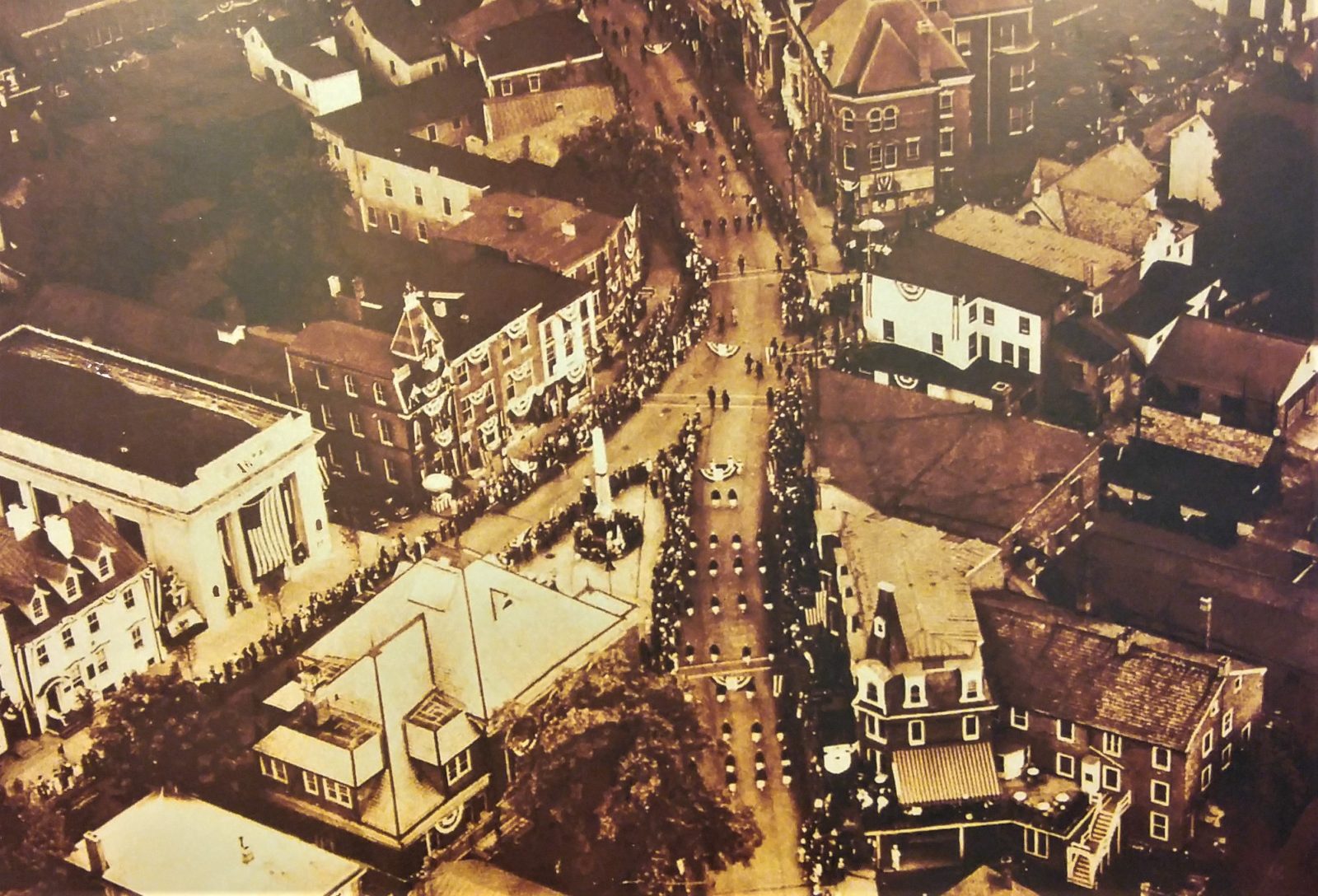Looking back on the extraordinary week in 1938 when Doylestown relived its first century.
Town meetings can get pretty feisty. In my 45-year career as a local journalist I’ve seen it all. Raucous crowds, citizens and officials going tit-for-tat over crazy ideas, sometimes devolving into laughter. Democracy at the local level at times seems akin to impassioned government in Stars Hollow of the “Gilmore Girls”.
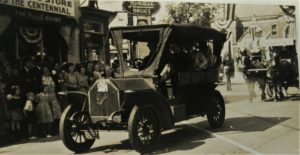
Approached recently to write about the great centennial celebration in Doylestown in 1938, I looked back on the planning. Borough officials wanted the week-long festivities in late May and early June to reflect all aspects of the county seat’s 100-year-old incorporated history. That’s when purists rose to insist on a few things out of the ordinary.
Like a hanging.
The former county prison – today’s Michener Art Museum – was where at least one convicted murderer met his maker. During deliberations of the planning committee, one member insisted on a staged hanging. “He insisted that no resume of the town’s history would be worth a tinker’s damn unless a famous hanging in the jailhouse yard was given full dramatic treatment,” said Grace Chandler, noting the idea nearly caused the panel “to ply apart.”
Another suggested building a replica of Doylestown’s first telegraph office at the exact moment it was struck by lightning. The idea was to set it afire with an appropriate bolt of electricity. Debate ensued. Someone noted the real operator narrowly escaped; he had gone to get a cup of tea. The make-believe operator might not be so lucky, the group concluded.
Both ideas fizzled though a third achieved positive nods: Get the Reading Railroad to build 2 miles of temporary tracks and supply a century-old smoke-stacked locomotive to replicate the coming of the railroad to Doylestown in 1856. The railroad’s reply: You gotta be kidding?
At one point, the committee anted up $1,000 for a professional production company to stage a pageant. But it needed help. “The commercial dispensers from the Mid-West had as much idea about Doylestown’s yesterdays as an Eskimo has of Danny Kaye’s brand of swing,” noted Chandler.
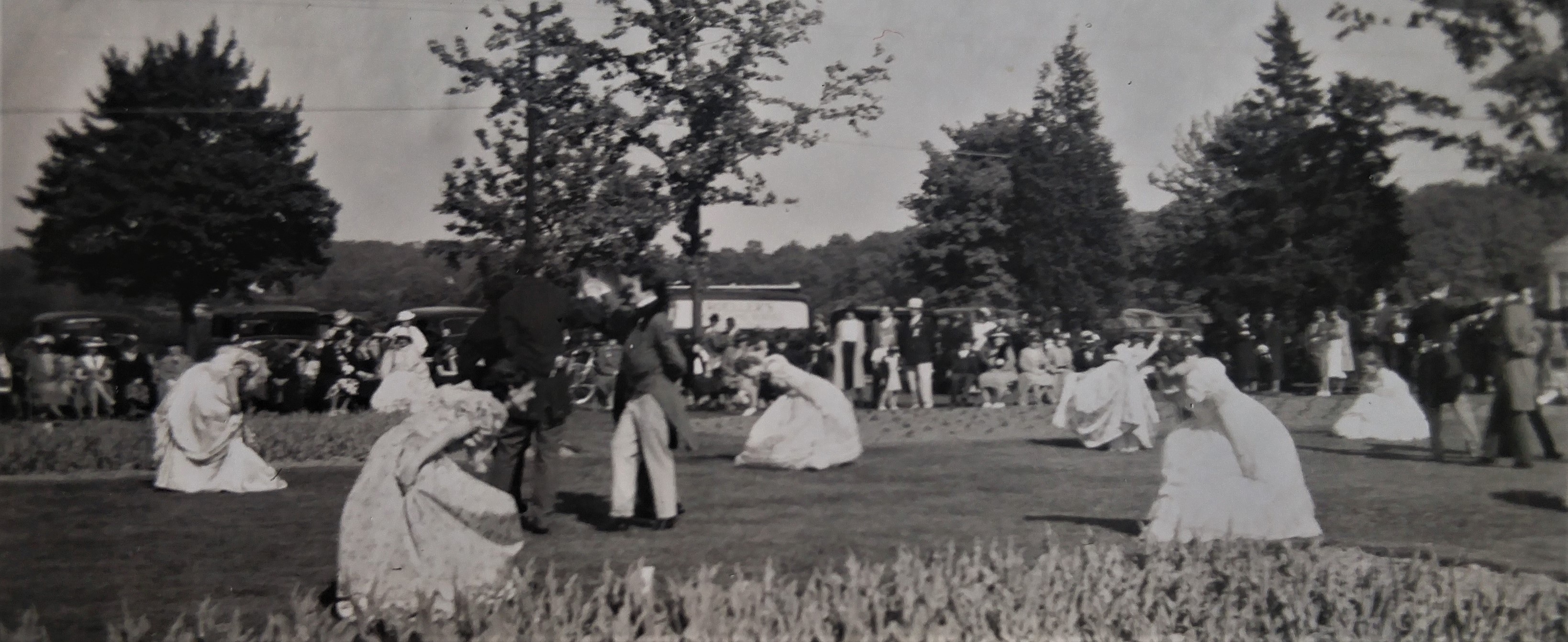
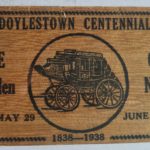
With time narrowing, the committee went into heavy-lift mode, organizing 600 actors and singers for a critically acclaimed drama narrated by county President Judge Edward G. Biester. “Our Yesterdays” featured 23 scenes emphasizing Doylestown’s historic eras, repeated on successive nights at the fairgrounds on Court Street opposite Fonthill Castle. Before each performance, Centennial Queen Caroline Fellman, a Doylestown High School senior, welcomed visitors “in the name of the inhabitants of the goodly borough.” A minuet staged in the Burpee Flower Gardens also was a hit (though some proclaimed the European dance “un-American”). Performers in tuxedos and fancy gowns swirled amidst the greenery. According to the local newspaper, “Astonished motorists on South Main Street eased pressure on the gas and gawked while the stately old dance was recreated.”
The Centennial committee published a plywood-bound commemorative book that quickly sold out. It also marketed wooden nickels redeemable throughout town. Town criers on horseback and swinging large bells announced daily historical re-enactments like the 1726 arrival of a Conestoga wagon with the borough’s first settlers. Horse-drawn mail coaches also rumbled in with the first mail delivery of 1792. Throughout the week, there were musical concerts, parades, a Burpee Flower Gardens reception, planting of a Centennial Oak, New Hope art colony workshops, Mercer Museum reception, Sports Day activities, ballroom dancing and a nocturnal masquerade stroll through town.
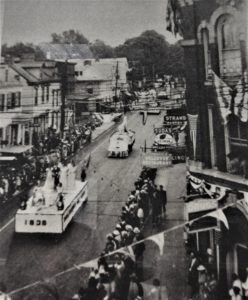
More than 25,000 people filled Doylestown for the grand finale on Saturday, June 4. Passing in review was an 8-mile-long processional of Conestoga wagons, mail coaches, a Native American on horseback, tractors, antique cars, bicycles, marching bands, Revolutionary War regiment, military veterans from other wars – all took their turns. Also floats on flatbed trucks including one with two living rooms with actors in period dress divided by a partition – one from 1838 when the borough was incorporated and one from 1938. Queen Fellman and her court rolled by on a horse-drawn carriage. All the while, a giant airship floated above the bunting- and flag-draped parade route.
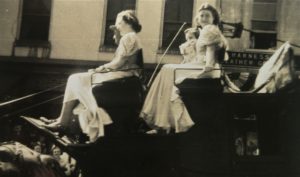
Among the show-and-tell demonstrations were Hulmeville firemen pulling a wheeled, hand-cranked 1838 water tank and directing water hoses onto a model building set afire in the middle of Main Street. Nearly 70 pieces of fire-fighting equipment from 52 companies and 16 bands participated in the parade.
Today some in the borough fondly recall that magical week. One of them is Esther Welch, 97, a close friend of Caroline Fellman and fellow graduate of Doylestown High School’s Class of 1938. “What I enjoyed most about the celebration was the friendliness, the feeling that this is ours and we are together. Doylestown was so close back then it was amazing. Anyone who you didn’t know you knew by the time the celebration ended.”
Sources include archives at the Doylestown Historical Society and a video of Doylestown in 1938 including the parade viewed at https://www.youtube.com/watch?v=iSAsMtSSmWg

